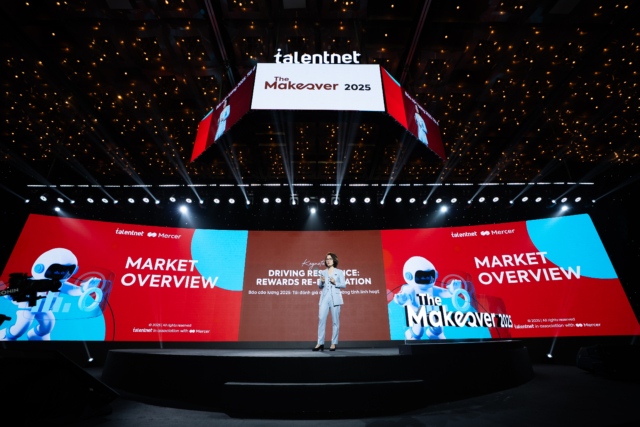How To Build An AI Implementation Roadmap For Business Success

Aug 18, 2025
Last updated on Oct 10, 2025
Building an AI implementation roadmap isn't just another technology project; it's a fundamental business transformation. While 65% of organizations now report using generative AI in some capacity, a staggering 74% struggle to scale their initiatives, and a third of all AI projects ultimately fail. The critical factor separating high-value transformation from expensive, failed experiments isn't a better algorithm—it's a better AI roadmap. Without a strategic plan, AI investments become fragmented, misaligned, and incapable of delivering the promised returns.

Key takeaways
- Companies with structured AI implementation roadmaps get 2.4 times better productivity gains than those using random approaches
- Data quality and C-level support are the two biggest success factors – companies with both see 4.5% higher cost savings than peers
- Early AI adopters already beat competitors by 15% in revenue – this gap will double by 2026
- The best results treat AI as major business change, not tech upgrade, using five clear phases: planning, building, testing, scaling, and improving
AI for business development could add nearly $18 trillion to the global economy. But getting this value means moving past random pilots and generic checklists. An AI implementation roadmap is your strategic guide through the complex process of adoption. It connects every project to core business goals, reduces major risks, and creates a clear path from vision to company-wide results. This framework turns AI from scattered bets into a focused, value-driven engine for growth.
The 5 phases of a successful AI implementation roadmap
A successful AI automation roadmap follows five clear phases. Each phase builds on the last, making sure strategy, technology, data, and people move forward together.
Phase 1: Strategic planning and initiation
This first phase defines why you’re investing in AI and gets the whole organization behind one vision. The best AI projects start by finding specific, high-value business problems rather than chasing new technology.
Focus on real problems like:
- Cutting customer churn rates
- Making supply chains work better
- Speeding up product development cycles
Every AI project must connect directly to business results and show clear return on investment. Companies with clear problem statements are much more likely to succeed with AI across the organization. The key question isn’t “How can we use AI?” but “What business problems can AI help us solve better?”
Top management support is critical for AI success. 82% of businesses see generative AI as a main tool for changing their organization. Success is impossible without top-level support, which makes sure the project gets strategic priority, dedicated resources, and clear responsibility. AI-reimagined leadership becomes essential as executives must set up an AI steering committee or similar group early to oversee strategy and put ethical guidelines in place from day one. This becomes more important as AI grows across the organization.
Phase 2: Capability building — preparing your data, people, and tech
With clear strategy set, focus shifts to building the basic capabilities needed for execution. Any AI model’s success depends entirely on the system that supports it.
Data quality is perhaps the most critical success factor. AI runs on data, making data quality and management paramount. 34% of failed AI projects cite lack of data quality as the main cause, while 31% fail due to lack of production-ready data. Organizations must fix inconsistencies, remove corrupt data, and build a modern, connected “digital core” that ensures data is accurate, secure, and accessible. This digital core should include secure data platforms, connected systems, and automated maintenance with open architecture for flexibility and growth. Without high-quality data as the foundation, AI projects will fail.
The talent challenge is equally significant. AI talent shortage is a major bottleneck for most organizations, with 34% of failed projects happening due to lack of internal expertise. Trained AI talent is scarce.
Companies must assess their internal capabilities and decide whether to:
- Build expertise through AI workforce development for existing employees
- Buy expertise by hiring new talent
- Borrow it by partnering with expert vendors
The best approach often means putting AI tools in the hands of domain experts—the people closest to actual business processes and challenges. These people are best positioned to find meaningful applications and drive relevant innovations in their areas.
Phase 3: Prototyping and validation — think big, start small, and prove value
Before committing to large-scale transformation, you must demonstrate feasibility and generate early wins to build momentum.
Successful organizations pick single, high-impact projects for small-scale pilots that can show concrete value. Instead of just measuring completion, conduct systematic “evaluations” to rigorously test the model’s performance against predefined business metrics and benchmarks for accuracy, relevance, and safety.
Morgan Stanley provides a compelling example: their financial advisors achieved 98% daily AI usage after conducting intensive evaluations across language translation, summarization, and expert comparison metrics.
Success must be measurable and tied to specific business outcomes. Organizations should define clear KPIs for their pilots, such as cost reduction percentages, revenue uplift metrics, process efficiency gains, or customer satisfaction improvements. Leading implementations focus on value-based KPIs rather than purely technical metrics.
The most popular business KPIs include:
- Profit margins
- Revenue growth
- Customer satisfaction scores
- Process improvement metrics
This provides the business case needed for further investment.
Phase 4: Integration and scaling — from successful pilot to enterprise-grade solution
Once a pilot has proven its value, the next challenge is to scale the solution and integrate it seamlessly into existing operations.
Infrastructure readiness becomes critical as organizations scale from proof-of-concept to enterprise-wide deployment. Whether using cloud-based or on-premise solutions, make sure your infrastructure can support increased operational demands without creating bottlenecks. This scaling phase requires strong processes for managing larger AI deployments, including considerations for data storage requirements, computational resources, and integration with existing business systems.
Technology deployment is only half the scaling challenge. A successful rollout requires a comprehensive change management plan to facilitate the transition. This includes providing ongoing training programs, maintaining clear communication about AI capabilities and limitations, and ensuring all stakeholders feel comfortable and capable of using new tools effectively. Organizations that neglect change management often see promising pilots fail during scaling phases, particularly as AI transforms business operations across different departments.
Phase 5: Continuous evolution and a culture of improvement
AI implementation is not a one-time project. It is an ongoing process that requires constant monitoring, optimization, and commitment to learning.
Successful organizations establish processes to continuously track the performance of AI solutions in the real world. Use new data and user feedback to retrain and enhance models’ accuracy and efficiency over time. Machine Learning Operations (MLOps) practices become essential during this phase, enabling organizations to maintain and improve AI systems systematically while ensuring reliability and performance standards.
True transformation occurs when AI is embedded in company culture rather than remaining isolated in technical departments. Organizations should promote continuous education to help all employees—not just technical teams—understand how AI and humans can work together effectively. Research shows that only 8% of firms engage in the core practices that support widespread adoption, which is a major barrier to scaling. This cultural transformation enables broader innovation and sustained competitive advantage.

The foundational pillars for sustained AI success
Across all five phases, three foundational pillars are non-negotiable for achieving and sustaining competitive advantage with AI.
- An interconnected digital core serves as the foundation for all AI initiatives. A modern, scalable, and secure foundation of applications, data platforms, and infrastructure is the prerequisite for deploying enterprise-grade AI solutions effectively. Without this technological backbone, even the most sophisticated AI models cannot deliver consistent business value.
- Strong self-governance and ethics have become essential for building trust with customers, partners, and employees. Organizations must establish and enforce clear frameworks for data privacy, security, transparency, and fairness. This is no longer optional; it is central to brand reputation and risk management. Companies that fail to address these concerns risk significant reputational damage and regulatory penalties.
- An AI-fluent and agile organization recognizes that ultimately, technology is leveraged by people. Success requires prioritizing workforce development to build AI-resilient business capabilities, fostering an agile and data-centric culture, and ensuring you have the right leadership to guide the transformation. Organizations must invest in developing AI literacy across all levels while maintaining agility to adapt as AI technologies continue evolving rapidly.
The path to AI-driven transformation is a strategic marathon, not a tactical sprint. The companies that thrive will be those that approach AI with a disciplined, custom AI implementation roadmap that aligns with their unique business context and is continuously refined.
The risk of doing nothing is no longer theoretical—early adopters are already outperforming their peers in revenue generation and productivity. The time to move from scattered experiments to a formal, strategic AI roadmap is now. The first step isn’t just to invest in more technology, but to assess your organization’s AI maturity and build the plan that will guide your future.
Ready to take your AI strategy to the next level? Join us at The Makeover 2025: SAILING AHEAD, where we’ll dive deep into AI-reimagined leadership, master human-AI workforce synergy, and provide you with an AI-ready checklist for leaders. Plus, Talentnet’s HR consulting and executive search experts can help you develop the talent strategy and find the leadership you need to turn your AI vision into reality. Contact us to learn more.

Solve your HR problems!
6th Floor, Star Building, 33 Mac Dinh Chi, Saigon Ward, Ho Chi Minh city, Vietnam




